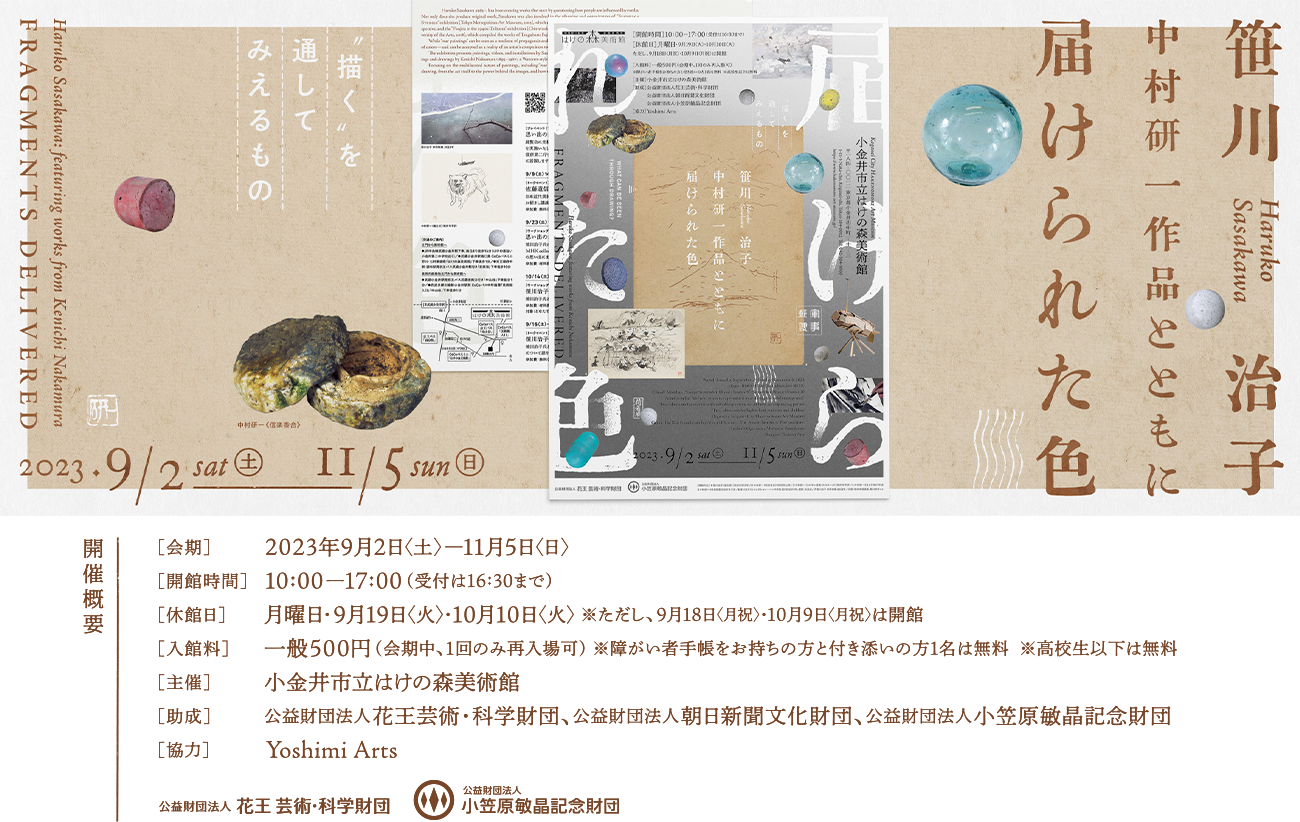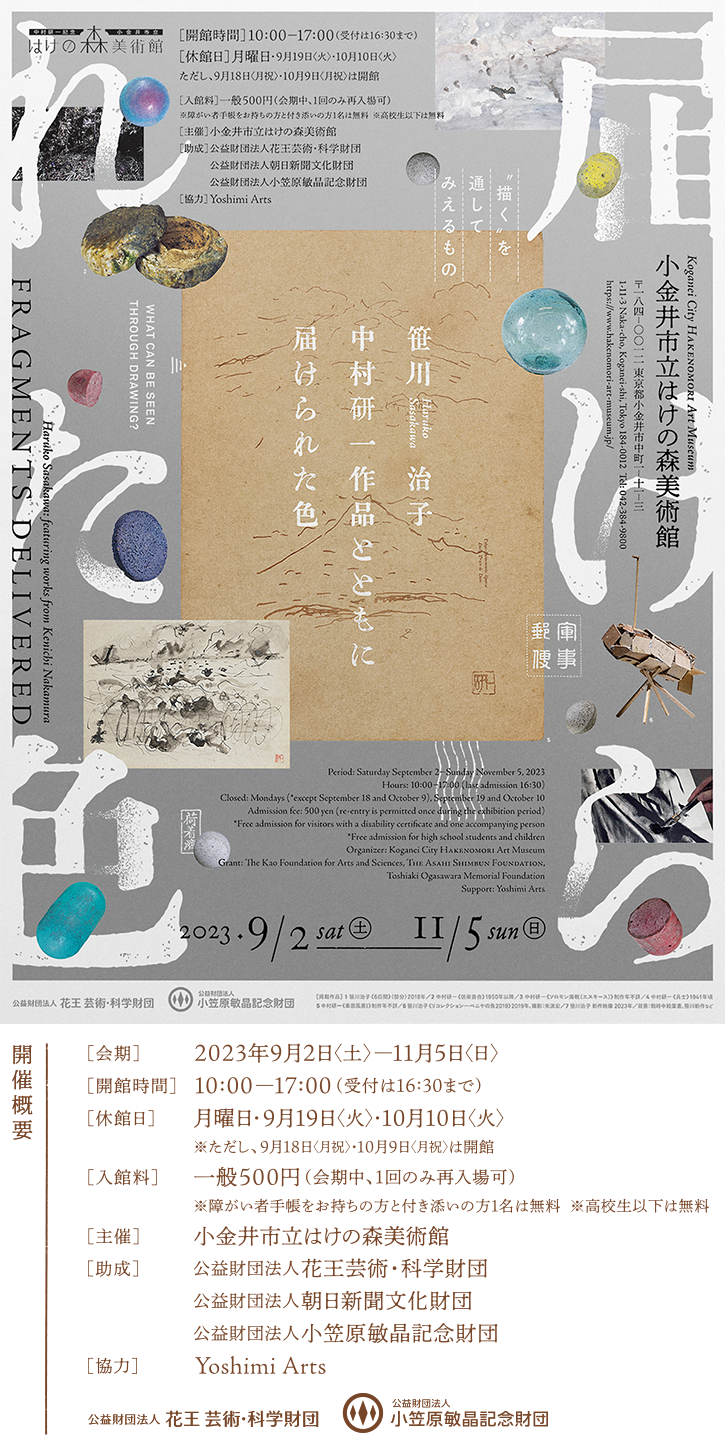










はじめて小金井市立はけの森美術館を訪れたとき、私は中庭に置かれた焼き物や椅子に気をとめることはなく、中村研一による絵画作品ばかり見ていた。展覧会のコンセプトを考えるため図書館に通い、中村に関する戦中の新聞や書籍のコピーを集めた。そしてまた何度か美術館に通ううち、館内に置かれた家具たちが、そこにあった画家の生活について語りだすような気がした。有名画家に限らず、誰もが何かを残してこの世を去る。残された品々は、出来事や記憶にアクセスするための鍵のようだ。
The first time I visited the Koganei City HAKENOMORI Art Museum, I paid no attention to the pottery and chairs in the courtyard, focusing solely on the paintings by KenichiNakamura. To create the concept of the exhibition, from the library I collected copiesof newspapers and books on Nakamura during the war. After several visits to the museum, I began to ‘hear’ the furniture in the space telling me about the artist's life.Everyone leaves behind something when they pass away, not just famous painters. The objects left behind are the keys that unlock events and memories.


明治に生まれ、昭和の戦争期に画業のピークを迎えたともいわれる中村研一。従軍画家としての活躍が新聞記事にとりあげられている。当時日本では、新聞だけでなく家族写真も映画も多くはモノクロだった。一方で、画家によって描かれた絵画や、発行された絵葉書は、遠い異国の風景として色のついたビジョンを人々に届けていた。
Born in the Meiji era (1868-1912), Kenichi Nakamura is said to have reached the peak of his painting career during the wartime period in the Showa era (1926-1989). As a military painter, his activities were featured in newspaper articles. In Japan at the time, not only newspapers but most family photos and movies were in black and white. In contrast, paintings drawn by artists and postcards produced during that time provided the people with visions of distant foreign lands in color.


しかし、対象を描くということは、絵にならないものを画面から省くということでもある。キャンバスに収められる情報は限られており、絵になるように作られているのだ。幸い、現代の鑑賞者は、描かれることのなかった無数の出来事を、残された手がかりをもとに知ろうとすることができる。たとえ、フレーム外にあったすべてを復元できるほどの資料や記憶が残っていないとしても。
Painting, however, also necessitates the omission of what cannot be painted. A canvas,made to be a picture, can only contain so much information. Today, based on the cluesleft behind, we are fortunate to be able to learn about countless events that were never depicted, even when there is not enough material or memory left to reconstruct everything from beyond the frame.


展覧会タイトルを「届けられた色」(Fragments Delivered)としたのは、絵画を成り立たせる要素に着目するためだ。形の定まらない色の粒子が一定の範囲に集合し、あるときは婦人画に、あるときは戦場のシーンを作りだす。本展でも、作品、遺品、個人が集めた記憶など、複数のフラグメントが展覧会を構成する。展覧会が終われば、それらはまた解散し、各々の保管場所に戻っていく。短い間だけ集められたフラグメントが、新たなビジョンを届けようとするはずだ。
I titled the exhibition “Fragments Delivered” to emphasize the elements that comprise a painting. Each particle of color, having no form of its own, is assembled within ranges – sometimes in the form of a woman, other times creating scenes from a battlefield. The exhibition itself is an assemblage of multiple fragments of artworks, articlesof deceased, and memories collected from individuals. Once the exhibition is over, they will disperse and return to their respective storage sites. Only collected for a brief while, these fragments will try to deliver new visions.





